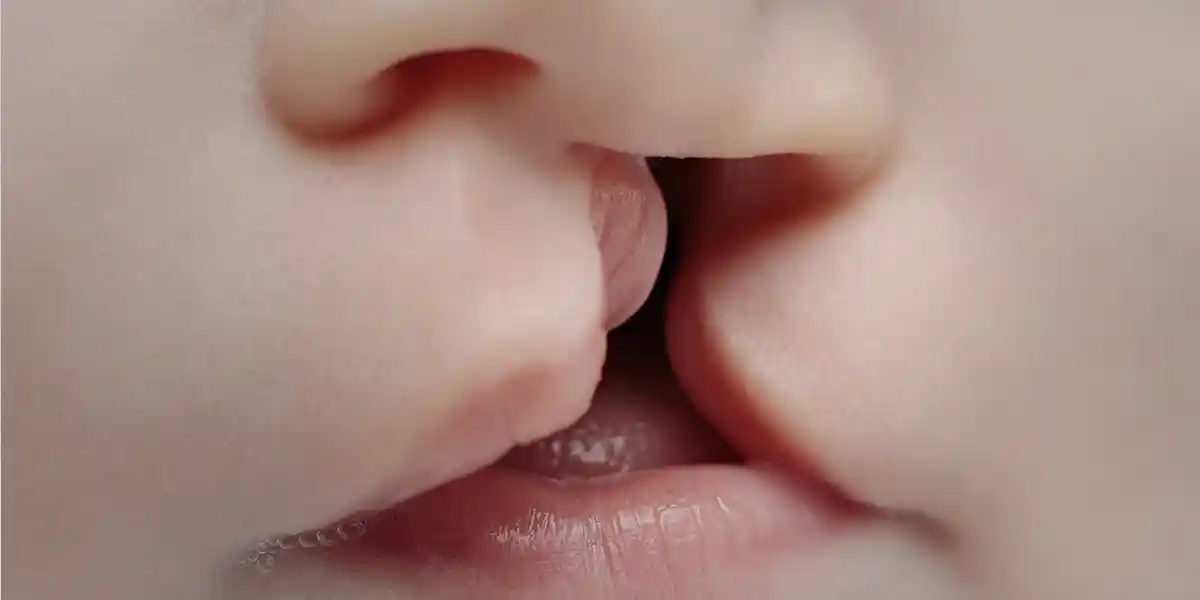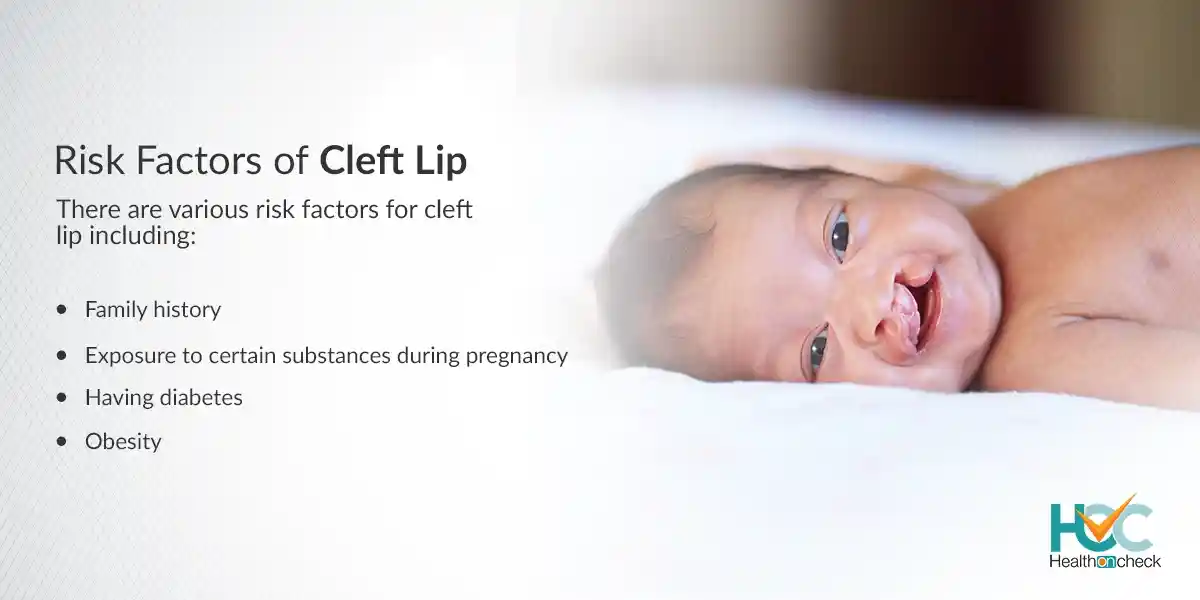What is a Cleft Lip?

The splits or openings in the upper lip, the roof of the mouth (palate), or both are known as cleft lip. A cleft lip develops when the facial structures that are forming in an unborn baby are not completely closed. A cleft lip occurs when the tissues that create the lips don’t join totally and because of this an opening or gap forms between the two sides of the upper lip. The cleft night varies from a small indentation to a big gap reaching the nose. This separation might include the gums or the palate (roof of the mouth). Cleft lip is one of the most common birth defects which usually occur as isolated birth defects but are also linked with many inherited genetic conditions or syndromes.
What are the Types of Cleft Lip?
The types of cleft lip include:
Forme fruste unilateral cleft lip: Here a subtle cleft forms on one side of the upper lip, which might appear as a small indentation.
Incomplete unilateral cleft lip: Here a cleft forms on one side of the upper lip, but it does not extend into the nose.
Complete unilateral cleft lip: Here a cleft forms on one side of the upper lip, extending into the nose.
Incomplete bilateral cleft lip: Here clefts form on both sides of the upper lip, which does not extend to the nose.
Complete bilateral cleft lip: Clefts form on both sides of the upper lip, which extends into the nose.
What are the Symptoms of Cleft Lip?
Generally, a split (cleft) in the lip or palate can be identified immediately at birth. Cleft lip might appear as:
- A split in the lip and roof of the mouth (palate) affecting one or both sides of the face
- A split in the lip that forms as only a small notch in the lip and it might also extend from the lip through the upper gum and palate into the bottom of the nose
- A split in the roof of the mouth that does not affect the appearance of the face
What are the Causes of Cleft Lip?
Usually, a cleft lip forms when tissues in the baby’s face and mouth are not fused properly. Generally, the tissues making up the lip and palate fuse in the second and third months of pregnancy. But in babies with cleft lips, the fusion never happens or it develops only part-way, which leaves an opening (cleft).
Researchers believe that most instances of cleft lip occur because of an interaction of genetic and environmental factors. In many babies, the exact cause is not clear.
One of the parents might pass on genes that result in clefting, either alone or as part of a genetic syndrome including a cleft lip or cleft palate as one of its signs. Sometimes, babies inherit a gene making them more prone to develop a cleft, and then an environmental trigger leads to the cleft developing.
What are the Risk Factors of Cleft Lip?

There are various risk factors for cleft lip including:
Family history: Having parents with a family history of cleft increases the risk of the baby developing a cleft.
Exposure to certain substances during pregnancy: A cleft lip is more likely to happen in babies of pregnant women who smoke cigarettes, drink alcohol, or take certain medications.
Having diabetes: According to some evidence, women diagnosed with diabetes before pregnancy might have an increased risk of having a baby with a cleft lip.
Obesity: Babies born to obese women might have an increased risk of cleft lip.
What are the Complications of Cleft Lip?
Children with cleft lip might face a variety of complications, based on the type and severity of the cleft.
Difficulty feeding: One of the main concerns after birth is feeding. A cleft lip may make sucking milk difficult.
Ear infections and hearing loss: Babies with cleft lip are at increased risk of developing middle ear fluid and hearing loss.
Dental problems: If the cleft extends through the upper gum, tooth development might be impacted adversely.
Speech difficulties: Due to the palate being used in developing sounds, the development of normal speech might be affected because of a cleft lip.
Challenges of dealing with a medical condition: Children with cleft lips might face social, emotional, and behavioral problems because of differences in appearance.
How Cleft Lip is Diagnosed?
The cases of cleft lift can be noticed right away at birth because of the appearance and special tests for diagnosis are not required. Increasingly, cleft lip can be diagnosed on ultrasound before the baby is born.
Ultrasound before birth: Sound waves are used in prenatal ultrasound to create images of the developing fetus. While analysing the images, a doctor might find a difference in the facial structures.
A cleft lip might be detected with ultrasound starting about the 13th week of pregnancy. As the fetus develops, it might be simpler to accurately diagnose a cleft lip.
If prenatal ultrasound detects a cleft, your doctor might prescribe a procedure to take a sample of amniotic fluid from your uterus (amniocentesis). The fluid test might indicate that the fetus has inherited a genetic syndrome that might lead to other birth defects.
What are the Treatment Options Available for Cleft Lip?
Surgeries for repairing a cleft lip occur within the 12 months of a newborn’s life: A cleft lip treatment might need more than one surgery. The first surgery usually is done when the baby is between 3 and 6 months old. This surgery is done to close the infant’s lip. The second surgery, if required, is generally carried out when the child is 6 months old.
Several techniques are available to improve the outcomes of cleft lip repairs if used appropriately before surgery. They are non-invasive and dramatically change the shape of the baby’s lip, mouth, and nose:
A lip-taping regimen helps to narrow the gap in the child’s cleft lip.
A nasal elevator helps form the correct shape of the baby’s nose.
A nasal-alveolar moulding (NAM) device might be carried out to help mould the lip tissues into a more favourable position while preparing for lip repair.
Surgery to reconstruct appearance: Extra surgeries might be required to improve the appearance of the mouth, nose, and lip.
Surgery can help to improve your child’s appearance, quality of life, and ability to eat, talk, and breathe. Additional treatment procedures such as speech therapy and orthodontic treatment are helpful to improve speech or other problems that might arise due to cleft lip.
Surgery to reconstruct appearance
Extra surgeries might be required to improve the appearance of the mouth, nose, and lip.
Surgery can help to improve your child’s appearance, quality of life, and ability to eat, talk, and breathe. Additional treatment procedures such as speech therapy and orthodontic treatment are helpful to improve speech or other problems that might arise due to cleft lip.
Living with Cleft Lip
You might feel overwhelmed and stressed to find out your baby has a cleft lip. In most instances, your baby is healthy, and surgery can help treat the clefts’ appearance. Fixing the lip and mouth is quite helpful to make them function correctly. Treatment might also include dental work, orthodontia, and speech therapy. If your child is diagnosed with a cleft lip, discuss with your doctor about the treatment plan and the possible outcomes. Children with cleft lip can lead a normal and healthy life.
Whom to Consult?
A cleft lip can be generally noticed at birth, and your doctor might begin coordinating care at that time. When your doctor notices that your child has a cleft lip, he will examine the cleft properly and start treatment accordingly.




